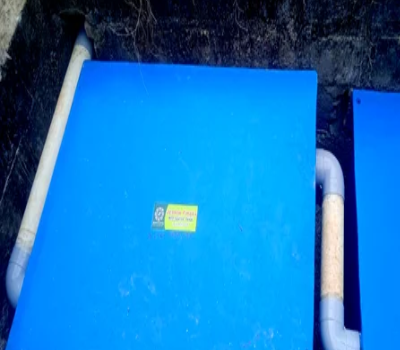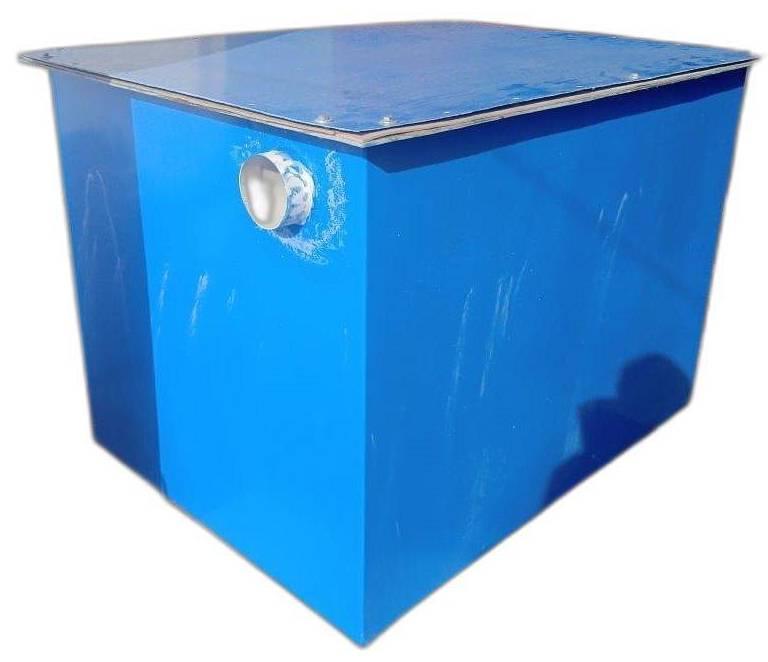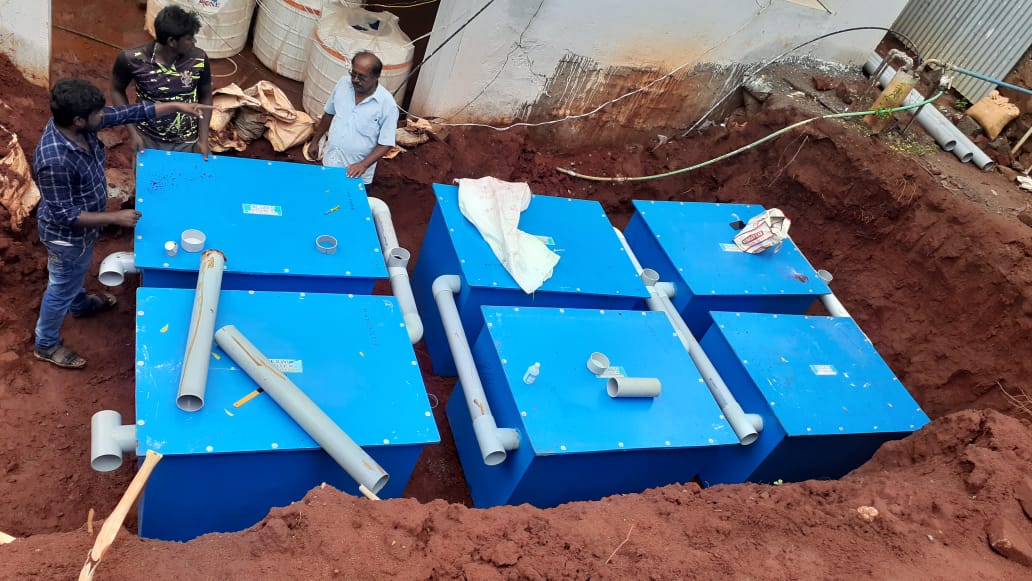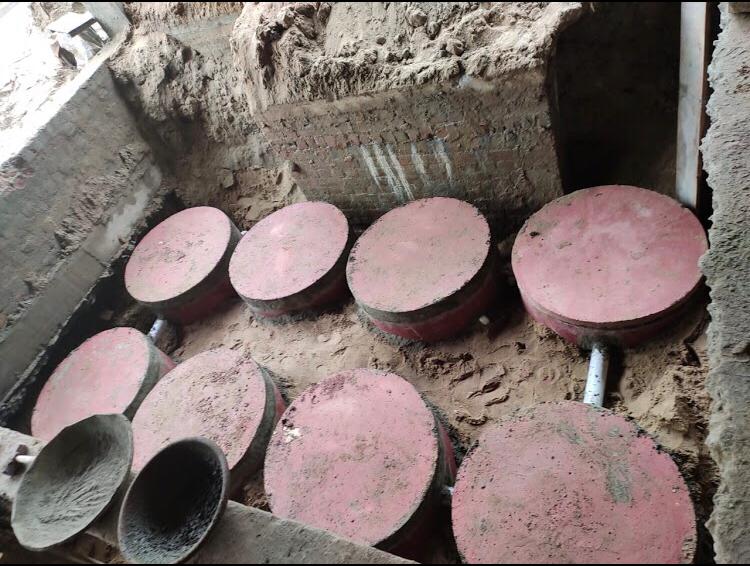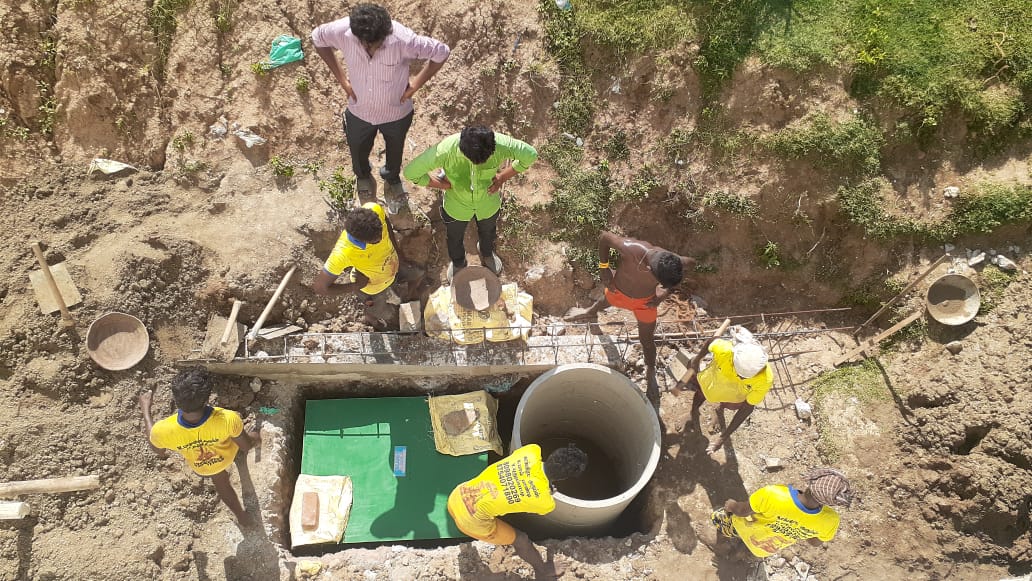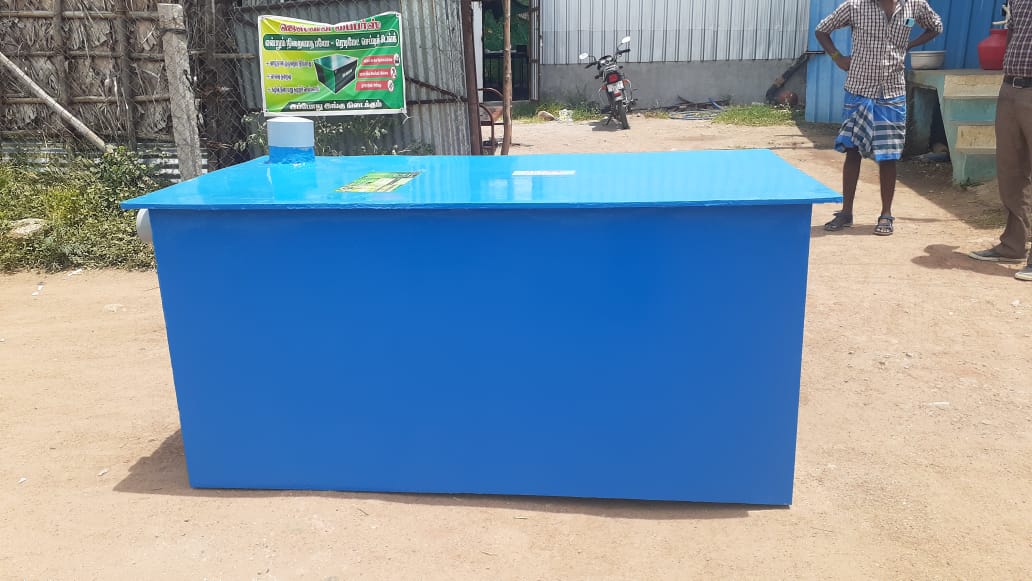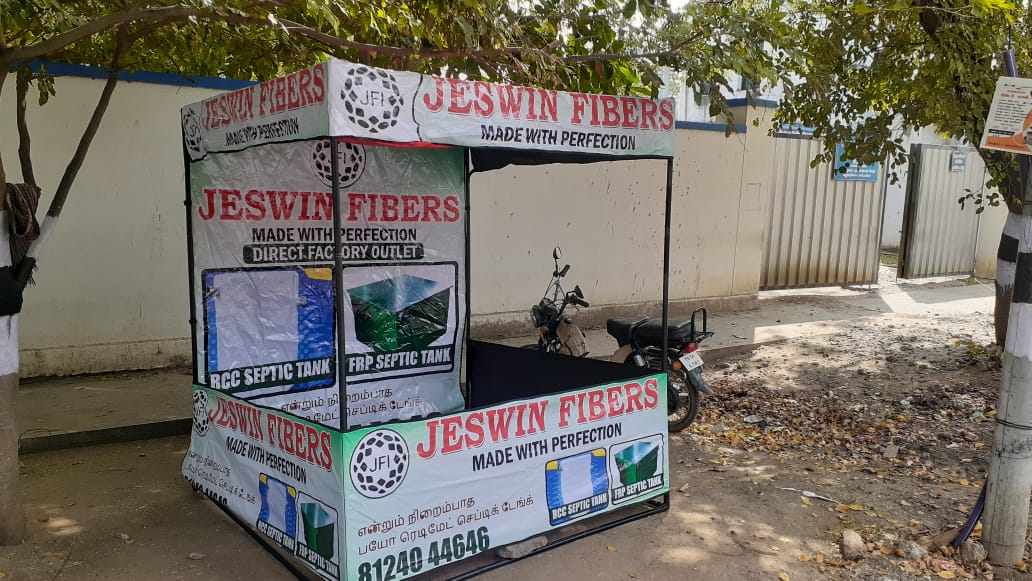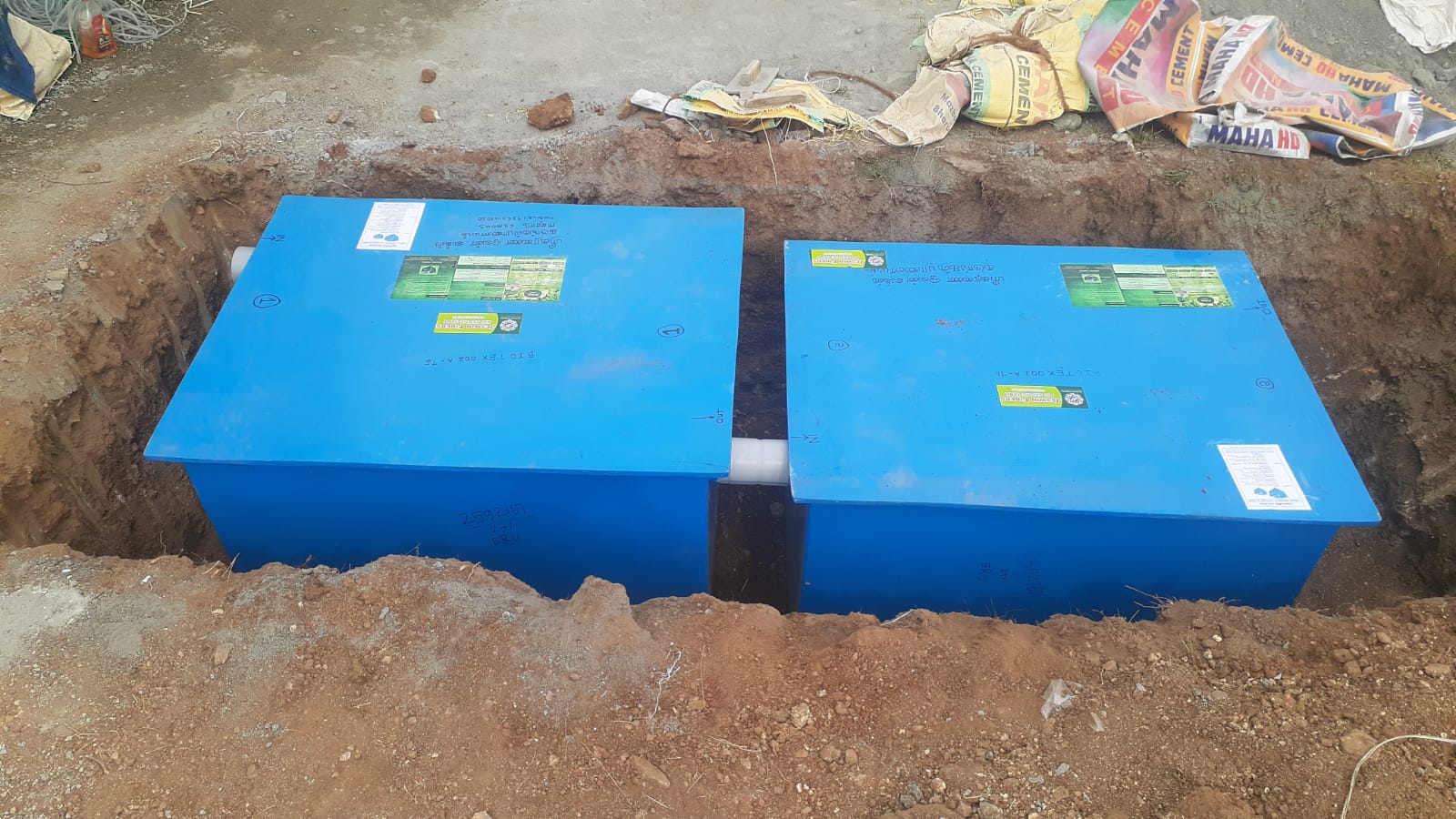- Our sales officer will visit you.
- No advance payment required, After Installation cash on delivery and EMI facility available.
- An estimation will be sent to you.
- 30 Years warranty card will be given.
- On approval, our technical team will excavate the land.
- Our pre-assembled solution will be set up within a short span of time.
Service
FRP Bio Septic Tank
The bio septic tank can become a crucial component in many households worldwide, positively impacting the environment. by shifting from a traditional septic tank to a bio septic tank, wastewater management becomes sustainable, more effective, and environment-friendly. at the same time, the bio septic tank is a pillar element of a biogas plant, whether we’re looking at domestic or industrial systems. without this tank, there can be no biogas production, as anaerobic digestion can only happen in a sealed environment that lacks oxygen.
What is a bio septic tank?
A bio septic tank is a waterproof chamber where bacteria break down organic waste from wastewater without oxygen through anaerobic digestion. In biogas production, this chamber is also called a digester.This sealed environment creates the ideal conditions for a series of chemical reactions, enabling the fermentation process to result in methane, carbon dioxide, and water.
Historically, septic tanks have been used for collecting and sometimes filtering wastewater in households that aren’t connected to the grid. In the last years, the system has been improved to permit biogas production and water recycling. It all happens thanks to an artificial process that mimics a natural phenomenon: the tank provides an environment where bacteria can digest organic waste and transform it into renewable energy. In a bio septic tank, the process will generate biogas, usable water, and sometimes bio-fertilizer. This organic, nutrient-rich sludge can be used in the planting and growing process.
Septic tank vs. Bio septic tank
Typically, septic tanks would accumulate the organic waste from domestic activities (primarily grey and black water), but they weren’t designed to support recycling or biogas production. Consequently, there’s no way to eliminate the sludge other than regular removal after the chemical reactions occur.The traditional septic tanks are just a way to keep wastewater from ending in the environment: you have a container made of concrete, steel, plastic, or fiberglass that you have to empty regularly to avoid waste going directly to the landfill. While not ideal, many people have to rely on it, especially in rural areas and suburbs that don’t have the infrastructure for centralized sewage systems.
In the US alone, almost 25% of the population uses septic tanks, which can harm the environment in the long run, mainly because most of these systems don’t rely on sustainable solutions to manage wastewater. Worldwide, numbers are even more alarming — according to UN reports, over 3.5 billion people use toilets and sanitation systems that are poorly managed or neglected in many parts of the world.
On the other hand, a bio septic tank can play a double role. Beyond collecting wastewater from the house, this system enables you to recycle it for irrigation and, in some cases, produce biogas at the same time. This way, besides maintaining a clean and safe environment, owners can cut down costs on water and generate carbon-neutral energy. By collecting the gas resulting from anaerobic digestion, they can substitute fossil fuel with sustainable energy for cooking or heating homes.
The bio septic tank is a modern and sustainable version of the traditional septic tank. It’s usually made from reinforced concrete; therefore, it is fireproof and eliminates fewer odors. It hosts the right bacteria and creates the perfect environment for turning wastewater into energy and usable water for gardening. It’s a sustainable solution that can improve life quality with less impact on the environment.
Bio septic tank work?
A bio septic tank is designed for recycling wastewater and enabling the biogas production process. Wastewater flows into the tank, and anaerobic bacteria start digesting the biomass (the organic matter in the wastewater). Depending on the type of bio septic tank used, there are several chambers inside, and the wastewater travels from one compartment to another as the process occurs. After the anaerobic digestion, wastewater goes into the aeration tank, where aerobic bacteria grows. In this stage, the waste is transformed back into water, methane, and carbon dioxide. Bacteria breathe the oxygen, eliminating all odors.
Small amounts of chlorine are added to kill any remaining pathogens to make the water usable. If used for gardening, all the nutrients in the water go back to the plants for increased efficiency. In other words, the bio-septic tank enables homeowners to use the water twice, once in their homes and a second time for irrigation, cutting down costs and making better usage of resources.While poor wastewater management can have disastrous consequences for health and the environment — and economics sometimes, systems using bio septic tanks can help communities worldwide while countering climate change.
FRP Bio Septic Tank Products
How to Order Us
Our Branches
Chennai
Dhanraj D, No 5&6, F3, First Floor,Thiruverkadu.
Chennai - 600077,
Landmark : Saveeth Pupil School Backside


